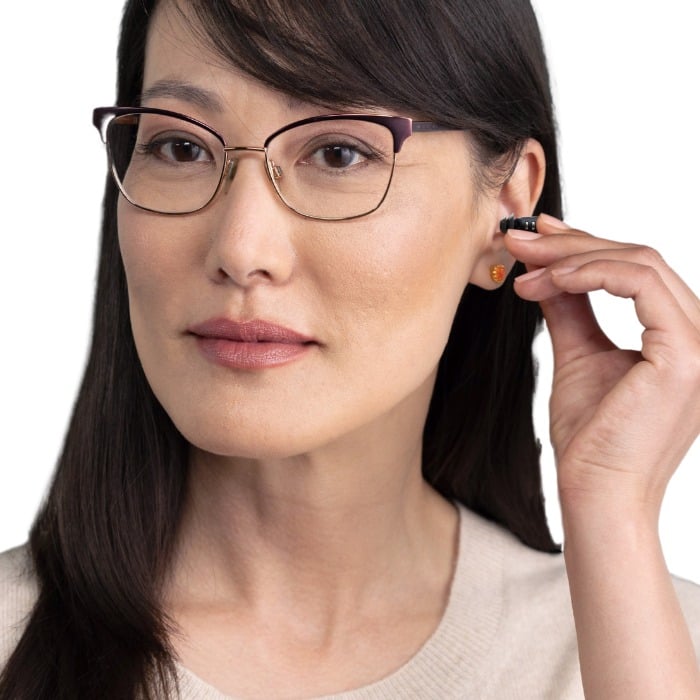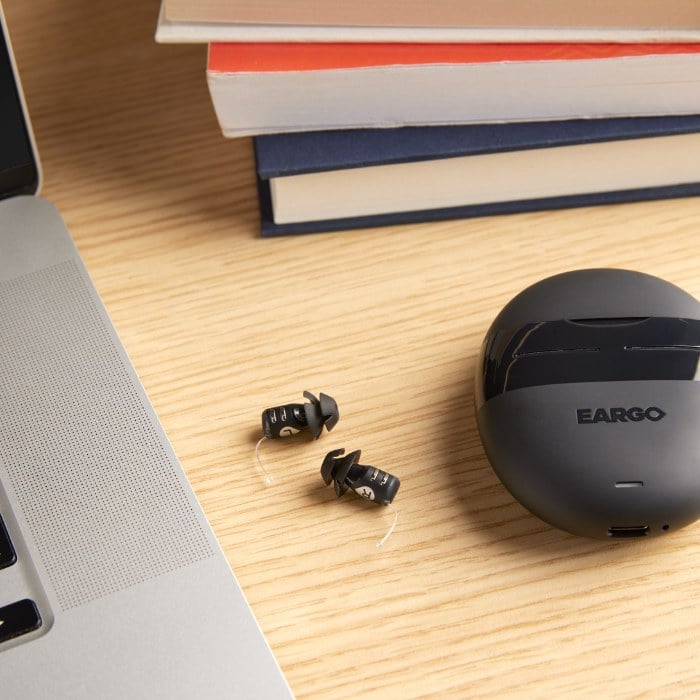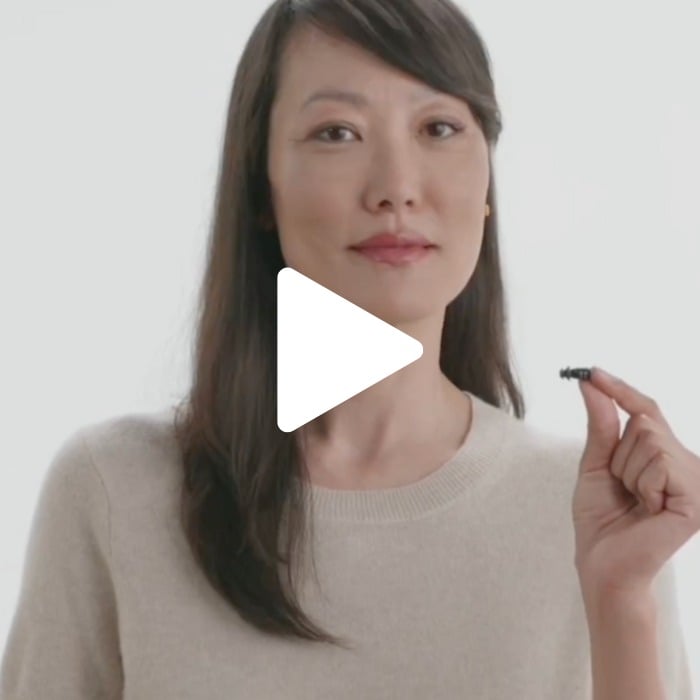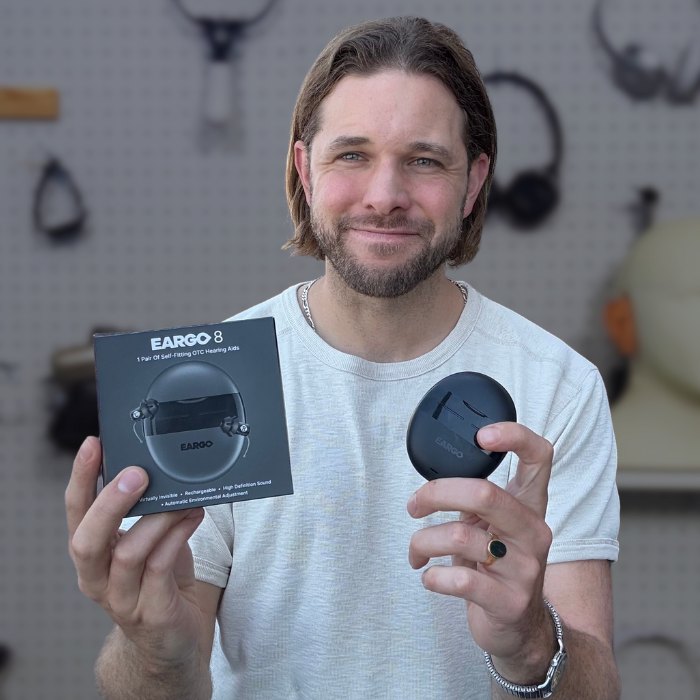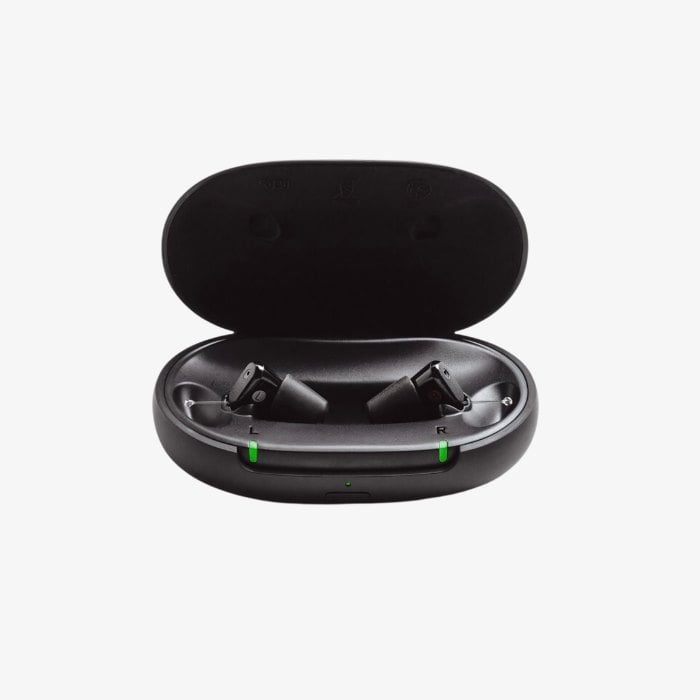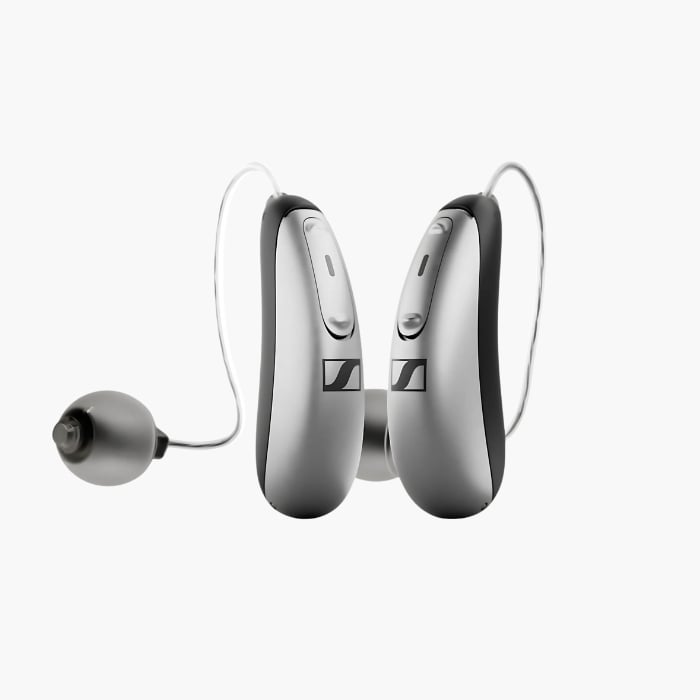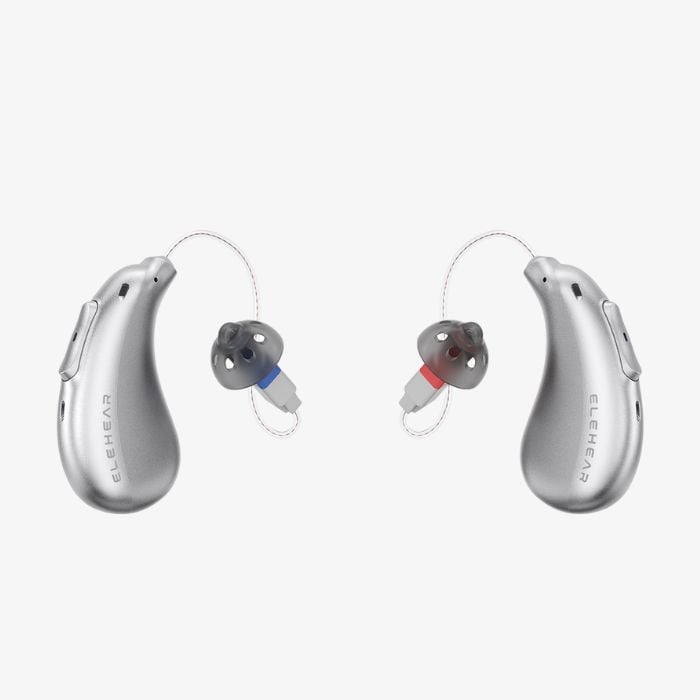Take Our Hearing Test >
Eargo 8
- Free Shipping
- Free Returns
- Discount In Cart
- Comprehensive Set-up Service: One of our Audiologists will assist you with setup remotely.At Soundly, every customer receives a complimentary phone or video consultation with a licensed audiologist. Call or text us if you have any questions about this service - 1 (213) 460-1310.
- Free 2-Day Shipping: Get your hearing aids delivered nationwide in just 2 days.
- 45-Day Risk-Free Returns: We offer no-hassle returns for any reason.
- 45-Day Price Drop Protection: We honor any price drops within 45 days of your purchase.If the Soundly price drops within 45 days of your purchase, contact us by phone or chat while the lower price is available. Within those 45 days, we'll make up the difference.
- Warranty: All Soundly customers receive a one-year manufacturer warranty.
A New Invisible-Style Hearing Aid For 2025
Eargo 8 is on our shortlist for anyone looking for a virtually invisible hearing aid that blends comfort, technology, and smart automation. Designed specifically for people with mild to moderate hearing loss, Eargo 8 delivers strong sound processing in a completely-in-the-canal design.
Eargo 8 is the new flagship from Eargo and now comes with Smart Sound Adjust, which automatically adapts settings based on your environment, and Device Scan, which helps you keep tabs on performance and maintenance. The result: clear sound, less hassle, and one of the most discreet solutions available today.
Eargo 8 Background
Eargo has spent the last decade rethinking how hearing aids should look and feel. Their signature form factor fits entirely inside the ear canal, making it virtually invisible during daily wear. Unlike many traditional hearing aids, Eargo doesn’t require an in-person fitting. You can purchase Eargo 8 directly through Soundly and receive a complimentary setup call with a licensed audiologist - all from home.
The Eargo 8 is the brand's newest and smartest product to date. It comes with improved sound fidelity, enhanced water resistance (IP68 rated), and a redesigned charging case that supports up to two weeks of use. All great upgrades for an already strong product line.
What We Like
- Invisible Design: Eargo 8 sits completely in the ear canal and is nearly invisible, even up close. Ideal for users who want a discreet hearing solution.
- Smart Sound Adjust: The new automatic environmental detection system tunes your settings based on whether you're in a quiet room, on a walk, or in a noisy restaurant—no manual input needed.
- All-Day Comfort: The soft eartips (available in multiple sizes) make Eargo 8 one of the most comfortable hearing aids we’ve tested.
- Upgraded Sound Quality: With 16 bands and 8 channels, Eargo 8 delivers clearer highs, richer lows than previous generations.
- Water and Sweat Resistant: With an IP68 rating, Eargo 8 can handle pretty much any level of moisture short of lap swimming.
- Wireless and USB-C Charging: The magnetic case is pocket-sized, USB-C compatible, and includes wireless charging. It holds up to 14 full charges.
- No Office Visit Needed: Eargo’s team offers remote support from licensed hearing professionals to help you adjust and personalize your settings, all from the comfort of home.
How Programming Works
Eargo 8 is a self-fitting hearing aid that begins with a built-in hearing test delivered through the devices themselves. Based on your results, the hearing aids automatically adjust to your specific hearing profile. Other notable features include:
- Smart Sound Adjust: Automatically classifies your environment and changes settings to reduce background noise and amplify speech in real time.
- Ongoing App-Based Customization: Adjust volume, bass/treble, and listening mode using the intuitive Eargo app (iPhone and Android).
- Device Scan: Run performance checks through the app to ensure your hearing aids stay in top condition.
- Support From Real Professionals: Eargo includes remote setup and adjustment help from their team of licensed hearing professionals.
Who Is a Candidate?
Eargo 8 is a good choice for individuals looking for a discreet, high-tech hearing aid without the need for in-person clinic visits. Key traits of ideal users include:
- Mild to Moderate Hearing Loss: Take our free hearing test to assess your hearing loss level.
- Invisible Preference: Many users choose Eargo because they don’t want their hearing aids to show. The CIC design makes Eargo 8 virtually undetectable.
- Tech-Comfortable: The app experience is simple, but users will benefit from being comfortable using a smartphone.
- Remote Setup Over Office Visits: Eargo’s model is built for people who prefer to manage their care from home, with professional support available on-demand.
Overall Thoughts
Eargo 8 is the invisible OTC hearing aid we recommend to anyone who wants a subtle solution with powerful performance. The combination of comfort, intelligent automation, and high-quality audio makes it a standout in the over-the-counter category—especially for users who value discretion.
While this model doesn’t offer Bluetooth music streaming or call handling, it more than makes up for it with smart features, great sound, and unmatched invisibility.
If you’ve been hesitant to try hearing aids, Eargo 8 is one of the most approachable ways to get started.
- Excellent Background Noise Control: Eargo 8 handles background noise better than past models, and the adjustable noise filter in the app noticeably improves overall listening comfort.
- Automatic Program Switching: The device intelligently switches programs as your environment changes—like moving from a quiet room to a restaurant—putting it on par with premium hearing aids.
- Clear Listening Mode Labels: Unlike previous models that used numbers, Eargo 8 announces modes like “Mask,” “Restaurant,” or “Meeting,” making it easier to know what setting you’re in.
- Ultra-Discreet Design: Eargo 8 remains one of the smallest rechargeable hearing aids on the market. It’s nearly invisible, even up close.
- The app and setup are intuitive for most users, but not foolproof—those uncomfortable with smartphone controls may find it challenging.
- Eargo 8 does not support Bluetooth streaming for music or phone calls due to its completely-in-the-canal design.
- It's also priced higher than some OTC alternatives.
- Eargo 8 hearing aids are sold over the counter and are appropriate for those with mild-moderate hearing loss
- If you have more significant hearing loss it is recommended that you access professional care through Telehealth or local care
- Available for purchase online or at retail stores like Verizon Victra and Best Buy
- Does not require a prescription from a doctor
- Customize your hearing aids with an onboard hearing test and app-controls
- Eargo has well-developed background noise management algorithms
- Smart Sound Adjust automatically adapts to your environment and focuses on voices
- Eargo sits inside of the ear and is one of the most comfortable in-ear options on the market
- Eargo creates less occlusion than many in-the-ear options
- Our team finds all in-the-ear models slightly less comfortable than RIC hearing aids
- Sit inside the ear
- Only available in one completely-in-canal size (nearly invisible in many ears)
- Only available in black
- Eargo hearing aids are rechargeable
- 16 hours of battery life on a single charge
- Each pair of hearing aids comes with a small and portable recharge case that carries 14 additional charges
- Eargo 8 does not offer Bluetooth streaming
- Eargo 8 is small but comes with rechargeable batteries which prevents difficult battery changes
- Eargo's devices include a pull-tab that makes it easier to place and remove the devices in your ears
- Eargo 8 hearing aids have an IP68 rating, meaning they can be submerged in up to one meter of water for 30 minutes without damage.
- Eargo 8 pairs with a smartphone app that includes an onboard hearing test and manual controls for programs, volume, and sound quality.
- You can also adjust volume and switch programs without the app by simply double-tapping your ear.
2 Eargo hearing aids
An Eargo portable charging case
45-day risk-free trial
2-year warranty
Unlimited replacements and one-time loss or damage coverage
Lifetime support
45-day risk-free trial
You can purchase Eargo 8 hearing aids directly through Soundly and access upgraded care and services.
- Soundly is an official Eargo retailer.
- Your purchase comes with Soundly's comprehensive set-up service.
- All orders come with 45-day risk-free returns.
- All orders come with free shipping.
- Soundly offers MSRP pricing and discounts. We will match the price of any other official retailer for the same product and terms.
- Your purchase comes with 45-day price-drop protection
Purchase on this page or contact our team to purchase over the phone. Your hearing aids will be shipped to your home along with setup instructions and an optional guided setup call with one of our hearing professionals.
Order Eargo 8 hearing aids on this page or over the phone. All orders come with free shipping, and you can return your hearing aids for any reason for 45 days.
Your hearing aids will arrive in 2-3 business days. You'll get all the accessories you need along with step-by-step instructions on how to tune your hearing aids at home using your phone.
Eargo hearing aids are tuned at home using their smartphone app. Once your hearing aids arrive in the mail, the app guides you through a hearing assessment administered through your hearing aids. The results of your assessment, then tune your hearing aids. No office visits or audiologists are necessary.
Your purchase comes with Soundly's comprehensive set-up service. A professional from our team will join you on a call to walk through the setup process.
What people are saying:
Lorem ipsum dolor sit amet, consectetur adipiscing elit. Suspendisse varius enim in eros elementum tristique. Duis cursus, mi quis viverra ornare, eros dolor interdum nulla, ut commodo diam libero vitae erat. Aenean faucibus nibh et justo cursus id rutrum lorem imperdiet. Nunc ut sem vitae risus tristique posuere.


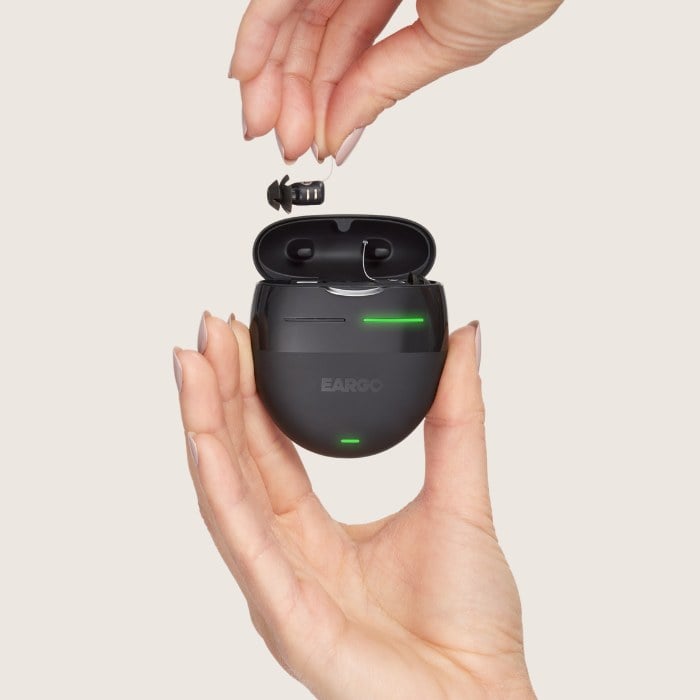
.jpg)
